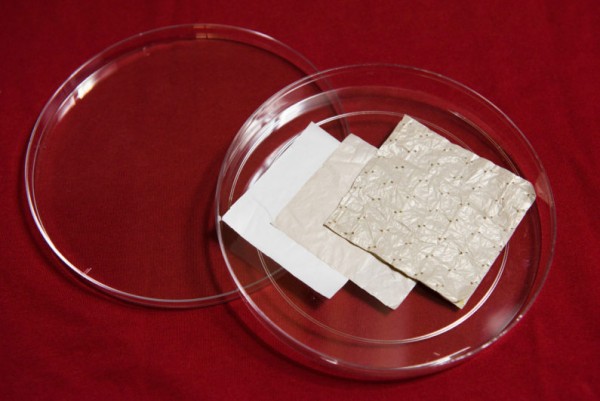By Ana Verayo, | September 05, 2016

Stanford researchers began with a sheet of polyethylene and modified it with a series of chemical treatments, resulting in a cooling fabric
In a new scientific breakthrough, researchers have created a new fabric that can keep your body cool despite rising temperatures from climate change and global warming.
A team of engineers from Stanford University created this fabric with the help of nanotechnology, allowing moisture to escape the body in a more efficient manner, releasing infrared radiation even more so.
Like Us on Facebook
This new fabric has not been tested on humans yet, however, scientists of this new study claim that the body can feel a significant difference of 4.8 degrees cooler than cotton, and 3.8 degrees cooler than other commercial synthetic fabrics.
According to lead author of the study, professor of materials and engineering Yi Cui, this new fabric is designed for a warmer world that is not only caused by global warming but to enable efficient heating and cooling of offices and homes.
Cui explains that with this fabric, many can have the option to manage their own temperatures, with individual heating and cooling systems. Fabrics that are existing today can efficiently remove moisture away from our bodies but they still do not control infrared radiation from entering and escaping the human body.
This plastic-like material can trap heat to warm the body but efficiently emits radiation, Cui adds. Polyethylene or plastic wrap helps emit infrared radiation very well but it also allows visible light to escape, which means that this material is see-through, which can be an obvious problem when it comes to clothing, Cui says.
With this in mind, the team changed the material by adding other chemicals to allow heat and moisture escape, except for visible light, which is even less expensive than cotton. Engineers also weaved this new material to feel like regular fabric, where they now describe it as "very soft to the touch".
Due to strict scientific regulations of testing clothing material on humans, the scientists created devices to simulate human skin to monitor skin temperatures, according to Cui. However, more research and testing are required before actual commercial production before people can actually wear it.
This new study is published in the journal, Science.
-
Use of Coronavirus Pandemic Drones Raises Privacy Concerns: Drones Spread Fear, Local Officials Say

-
Coronavirus Hampers The Delivery Of Lockheed Martin F-35 Stealth Fighters For 2020

-
Instagram Speeds Up Plans to Add Account Memorialization Feature Due to COVID-19 Deaths

-
NASA: Perseverance Plans to Bring 'Mars Rock' to Earth in 2031

-
600 Dead And 3,000 In The Hospital as Iranians Believed Drinking High-Concentrations of Alcohol Can Cure The Coronavirus

-
600 Dead And 3,000 In The Hospital as Iranians Believed Drinking High-Concentrations of Alcohol Can Cure The Coronavirus

-
COVID-19: Doctors, Nurses Use Virtual Reality to Learn New Skills in Treating Coronavirus Patients







